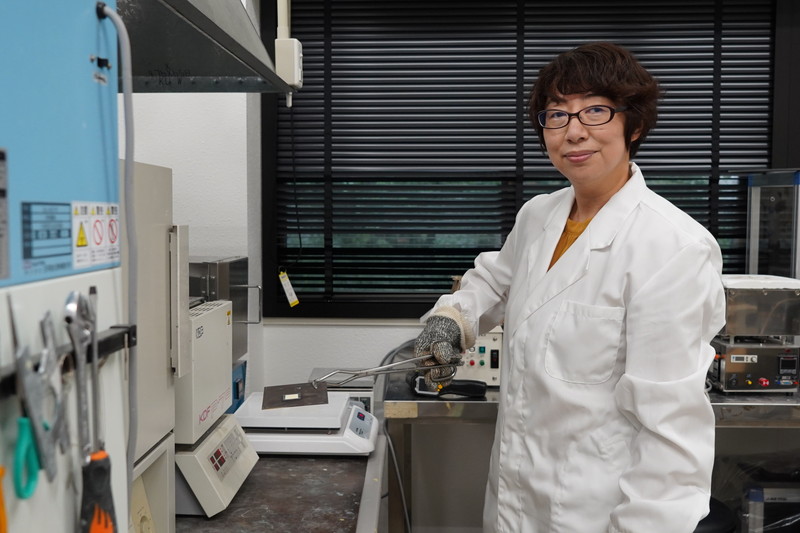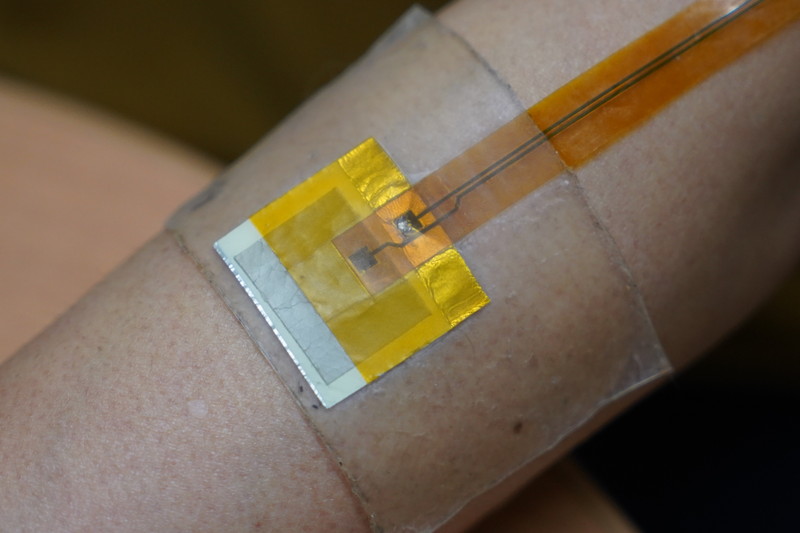NEWS
IROAST Researchers - Prof. Makiko Kobayashi
English Japanese
Applying engineering technology to medicine:
Ultrasonic sensors for stress-free medicine

Prof. Makiko Kobayashi
IROAST International Joint Research Faculty Member
Faculty of Advanced Science and Technology (Faculty of Engineering)
International joint research is flourishing at IROAST. Professor Makiko Kobayashi is working on the development of ultrasonic sensors for medical use under one of these research projects. Professor Kobayashi is aiming to commercialize a new medical sensor as she travels back and forth between Japan and Singapore.
■ Development of ultrasonic sensors capable of monitoring at home
Q: Please tell us about your research.
Kobayashi: I am developing ultrasonic sensors for medical use in collaboration with Dr. U Rajendra Acharya (currently Distinguished Professor) from Singapore, who was formerly a visiting professor at IROAST. We want to develop a system in which, by attaching these sensors to the body, data measurements can be made by AI and any abnormalities reported to a hospital. I recently took the latest sensor to Singapore, and we found that it was able to monitor the condition of blood vessels in the heart in real-time.
The features of this sensor are that it is soft and adheres to the desired location on the body, making it stress-free. Conventional medical sensors can cause stress when worn for long periods of time. In the future, we want to make these devices wireless. The COVID-19 pandemic has also increased the demand for monitoring at home. It is an ultrasonic sensor, so it can monitor the patient multiple times with no exposure to radiation, unlike X-rays.
Q: What sparked your interest in working in a medical-engineering collaboration?
Kobayashi: I was originally developing piezoelectric sensors for industrial use, and I realized that this technology could also be applied to medicine. However, I knew no doctors and had no contacts with medicine-related companies, so I assumed it would be too difficult and did not venture down that path. There were also a number of issues that had to be resolved in terms of the Pharmaceutical Affairs Law and funding. However, the emergence of demand for ultrasonic sensors in the medical field and an encounter with Dr. Acharya made this collaboration feasible. Decisions are made very rapidly in Singapore, so if the sensor becomes usable, it may be available for practical use immediately.

■ IROAST has made this medical-engineering collaboration possible. Practical application and widespread use of ultrasonic sensors is a dream.
Q: What were the positive aspects of your research at IROAST?
Kobayashi: The most important thing was that Professor Takashi Hiyama, the director of the Research Institute at the time, introduced me to Dr. Acharya. The support IROAST provided for purchasing equipment and funding travel expenses was also a great help. It would normally be difficult for someone like me from the Faculty of Engineering to receive a budget when submitting an application for medical equipment. However, I am truly grateful to IROAST for helping me achieve these outcomes in the medical field.
Q: How do you want to develop ultrasonic sensors in the future?
Kobayashi: It is my dream to achieve the practical application and widespread use of ultrasonic sensors. If practical application is achieved, a person’s blood vessels and lungs can be monitored at home, which would save the trouble of going to a hospital for monitoring and would reduce the burden on doctors. These sensors can also monitor heartbeat and respiration, so I think they would also be useful for monitoring children at risk of sudden infant death syndrome (a condition where a previously healthy infant dies suddenly in their sleep without any accident or suffocation). It is impossible to watch over a baby the entire time they are sleeping. These sensors could of course be used at home, and using them in nurseries during nap time would reduce the burden on childcare staff. I felt burdened by counting fetal movements during my pregnancy. In the future, I think it would be wonderful if ultrasonic sensors could be distributed to pregnant women from hospitals or government offices, and the sensors could then be used to count fetal movements.

■ People wanting to conduct research overseas should definitely come to IROAST!
Q: How do you refresh yourself?
Kobayashi: In my spare time I play games and read electronic comics on my smartphone. When I was a student, I was addicted to playing games. I can now listen to the music of the games I was really into at that time on YouTube, so when I’m working, I immerse myself in the memories of those days through music (laughs). I also like to sing, but I haven’t been able to do that recently because of the COVID-19 pandemic. I have also sung opera in a choir.
Q: What is your message to young researchers?
Kobayashi: IROAST collaborates with many high-caliber overseas research institutes. IROAST can introduce you to overseas researchers in your preferred field of research, and you can also exchange ideas with researchers in other fields. Since overseas students are highly motivated, going overseas is very stimulating. Anyone who wants to conduct research abroad should definitely rise to this challenge by taking advantage of the IROAST system.
Reference links
- IROAST Staff - International Joint Research Faculty Member

